
-
Find the right food for your petTake this quiz to see which food may be the best for your furry friend.Find the right food for your petTake this quiz to see which food may be the best for your furry friend.Featured products
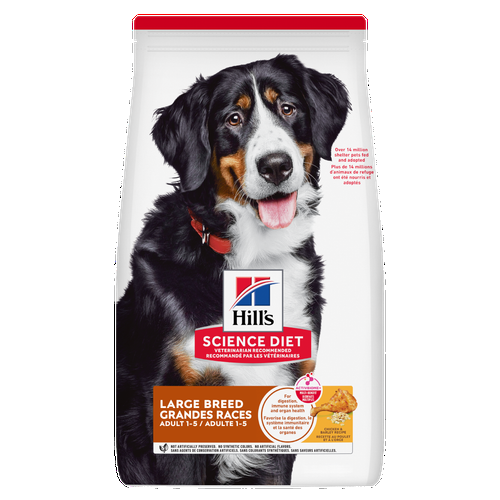 Adult Large Breed Chicken & Barley Recipe Dog Food
Adult Large Breed Chicken & Barley Recipe Dog FoodSupports healthy joints, immune system, digestion, lean muscle & beautiful coat
Shop Now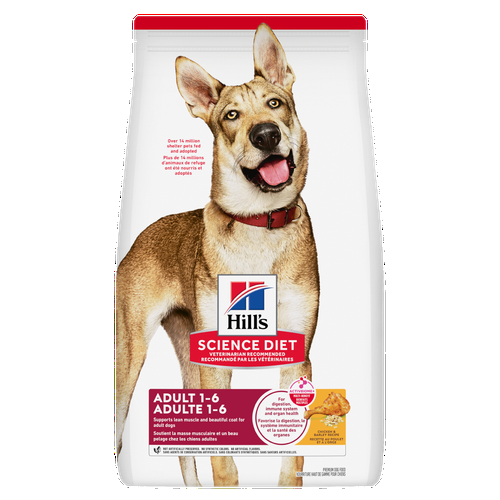 Adult Chicken & Barley Recipe Dog Food
Adult Chicken & Barley Recipe Dog FoodSupports healthy immune system, digestion, lean muscle & beautiful coat
Shop Now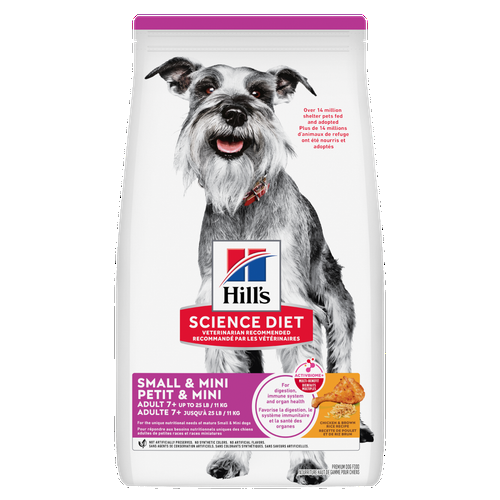 Adult 7+ Small & Mini Chicken & Brown Rice Recipe Dog Food
Adult 7+ Small & Mini Chicken & Brown Rice Recipe Dog FoodSupports energy level & luxurious coat in Small & Mini dogs. Helps keep immune system, heart & kidneys healthy.
Shop NowFeatured products Adult Oral Care Chicken & Brown Rice Recipe Cat Food
Adult Oral Care Chicken & Brown Rice Recipe Cat FoodClinically proven kibble technology to reduce plaque & tartar build-up
Shop Now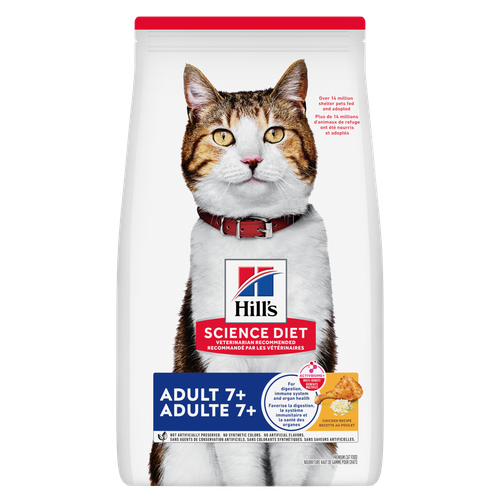 Adult 7+ Chicken Recipe Cat Food
Adult 7+ Chicken Recipe Cat FoodSupports energy level & beautiful fur. Helps keep immune system, heart & kidneys healthy.
Shop Now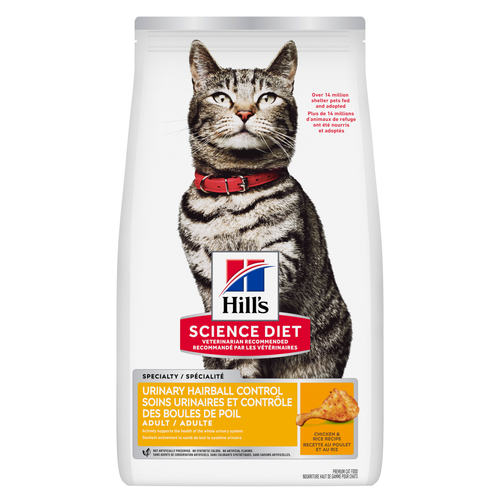 Adult Urinary Hairball Control Chicken & Rice Recipe Cat Food
Adult Urinary Hairball Control Chicken & Rice Recipe Cat FoodSupports the health of the whole urinary system with optimal levels of magnesium
Shop Now -
Dog
- Dog Tips & Articles
-
Health Category
- Weight
- Food & Environmental Sensitivities
- Urinary
- Digestive
- Joint
- Kidney
- Dental
- Cancer
-
Life Stage
- Puppy Nutrition
- Adult Nutrition
- Senior Nutrition
Cat- Cat Tips & Articles
-
Health Category
- Weight
- Skin & Food Sensitivities
- Urinary
- Digestive
- Kidney
- Dental
- Stress
- Cancer
-
Life Stage
- Kitten Nutrition
- Adult Nutrition
Featured articles Compare Your Pet Food's Calories to Other Brands
Compare Your Pet Food's Calories to Other BrandsCompare Hill's Science Diet dog and cat food's calories against other pet food brands and AAFCO recommended maximum calorie count.
Read More The Incredible Science Behind Your Pet's Microbiome
The Incredible Science Behind Your Pet's MicrobiomeLearn what a pet's microbiome is, how it contributes to your pet's gut & overall health, and why nutrition is important in maintaining healthy microbiomes.
Read More Pet Food Storage Tips
Pet Food Storage TipsDiscover how and where to store your dry, as well as canned, dog and cat food. Learn how to find the "best before" dates on all Hill's pet food packaging.
Read More -


If you're a pet parent looking for interactive playtime with your pup, teaching your dog to fetch is a terrific way for the two of you to bond and get some exercise.
However, playing fetch doesn't come naturally to some dogs. You may know already if you throw a stick for your dog, and he happily chases after it but doesn't bring it back.
Fetching, whether with a ball, flying disc, stick or shoe is not an instinctive behavior in dogs, no matter what the breed of dog (even some retrievers won't retrieve). Because of this, many dogs simply aren't interested in returning objects.
"Some dogs enjoy chasing and being chased; for these dogs, the best part of the game is when a human runs after them to get the ball," explains Vetstreet. The reward for them is catching the object, not returning it, and they'll wait for their pet parent to do the fetching.
Or, your dog may not even chase the object that you're throwing, whether he's asserting his independent spirit or simply enjoying watching the ball soar through the air, then looking at you as if to say, "What's your next trick?"

He does look pretty cute sitting next to his ball with a big doggy smile on his face, but think of how much more fun you and your furry companion can have if he learns how to fetch!
Fetch Objects
Animals become attached to their toys, and using a favorite dog toy for retrieval training is a great way to get (and keep) your pup's interest. Your dog may love his stuffed bunny, but rubber balls may be a better and safer choice because they are sturdier and won't shred like a plush toy.
It may take a few tries, but once you find a ball your dog gets really excited about, toss it around to familiarize and engage him. You can start by throwing the toy just a few feet away. After he chases and catches the toy, encourage him to return to you and drop the ball.
Rewards
One of the first things you need to decide is what his prize will be for retrieving the ball. An effective way to reward your canine pal for his good behavior is to use training treats or kibbles of dog food. Start training with rewarding him each time, but slowly, as he starts to get the hang of things, do it less so he does not think that the point of this play is to get a treat. Once your dog learns the behavior, you can move to "lesser rewards" (such as praise and extra praise) instead of food.
At all stages of retrieval training, make sure to give him verbal praise to encourage the repeat behavior. When he returns the object, do not immediately reach for it, but rather praise him, pet him and possibly even give him a treat. As he learns to drop the object on his own in anticipation of you throwing it again, he's starting to understand what the game of fetch is all about. Don't praise him if he doesn't return the ball, otherwise you're not reinforcing the behavior that you want him to do.


Tasty Tips
Commands
If your dog is already familiar with basic commands, such as "sit" and "stay," you're off to a good start. Teaching a dog to fetch includes other commands, such as "drop it," which is particularly helpful if he likes to hold onto the ball in his mouth when he returns it to you. This can be a completely separate training session on its own.
At first you may have to barter with your dog by offering something like a treat in exchange for the ball, but overtime he should start to understand the drop command. This can come in handy if he ever decides to eat something that he shouldn't, so you don't have to reach into his mouth to pull it out.
Safety
Dogs playing fetch is as old as time, but it's also import to ensure that you keep him safe while playing. Make sure your dog is very well-trained or in an enclosed area to ensure that he will not run away. If you're playing at a dog park, make sure that there is not competition with other dogs that could result in a fight over the toy. Finally, always remember to throw the toy away from danger — never toward traffic or heavy areas of congestion. Avoid throwing it near water if your dog is not a strong swimmer, or has no interest in going into the water to fetch.
With patience and persistence, teaching a dog to fetch is a rewarding lesson for you and your pup. It's a great way to bond and the two of you can spend countless hours playing. But what if he just doesn't like playing fetch? There is still an abundance of other fun games you and your little guy can play together.
Who knows, maybe all this time he was just teaching you how to fetch and you didn't realize it.


Christine O'Brien is a writer, mom, and long-time cat parent whose two Russian Blues rule the house. Her work also appears in Care.com, What to Expect, and Fit Pregnancy, where she writes about pets, pregnancy, and family life. Find and follow her on Instagram and Twitter @brovelliobrien.
Related products

Supports energy level & luxurious coat in Small & Mini dogs. Helps keep immune system, heart & kidneys healthy.

Supports healthy immune system, digestion, lean muscle & beautiful coat

Supports healthy joints, immune system, digestion, lean muscle & beautiful coat
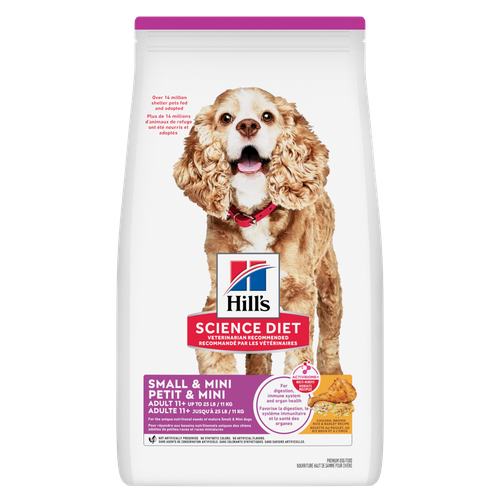
We make every bag of our dry dog food in our own US facilities with highest quality ingredients from North America, Europe and New Zealand. These ingredients must meet our strict requirements for purity and nutrient content, which exceed industry standards.
You can make a difference in the lives of shelter pets. With every purchase of Science Diet you help feed shelter pets globally - every day. In AUSTRALIA, since 1997, we have provided over 1.6M kg of Hill's pet food to LOCAL ANIMAL SHELTERS. Learn more at http://hillspet.com.au/shelters
Related articles

Gather the following puppy supplies to prepare your family for all the fun (and commitment) that comes with being a dog parent.

Learn how to stop your dog from begging at the dinner table, and understand how it can help contribute to his health.

Discover fun and engaging games and other ways to help your dog exercise, keeping him happy and healthy.

Proper nutrition for your pregnant or nursing dog is vital to her and her puppy's health. Learn what you should do provide her with the proper nutrients.

Put your dog on a diet without them knowing
Our low calorie formula helps you control your dog's weight. It's packed with high-quality protein for building lean muscles, and made with purposeful ingredients for a flavorful, nutritious meal. Clinically proven antioxidants, Vitamin C+E, help promote a healthy immune system.
Put your dog on a diet without them knowing
Our low calorie formula helps you control your dog's weight. It's packed with high-quality protein for building lean muscles, and made with purposeful ingredients for a flavorful, nutritious meal. Clinically proven antioxidants, Vitamin C+E, help promote a healthy immune system.

